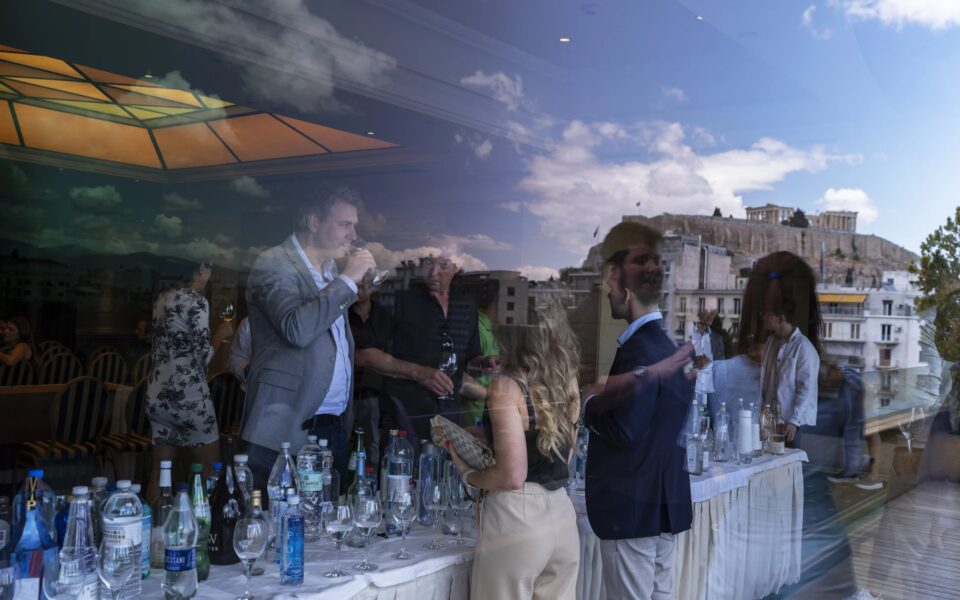Luxury water becomes fashionable among the elites
Fine Water Society gathered in Athens for their annual international tasting competition and symposium last April.

Millions of people worldwide don’t have clean water to drink, even though the United Nations deemed water a basic human right more than a decade ago. Yet, even as extreme heat dries up more aquifers and wells and leaves more people thirsty, luxury water has become fashionable among the world’s privileged, who uncap and taste it like fine wine.
Fine water is drawn from volcanic rock in Hawaii, from icebergs that have fallen from melting glaciers in Norway, or from droplets of morning mist in Tasmania. The rarest of all, often bottled in collectible glass, sell for hundreds of dollars apiece.
Associated Press teams reported on the trend from India, Bhutan and Greece.
The fine water scene was on full display when members of the Fine Water Society gathered in April at a swanky hotel in Athens, Greece, for their annual international tasting competition and symposium.
They discuss “virginality,” or purity. They learn about “terroir,” the environment in which water originates. They compare the total dissolved solids, or TDS.
Waters with low TDS are more like rainwater that hasn’t touched the earth. Those with high TDS – such as Vichy mineral water from thermal springs in France and Catalan – have robust mineral content that may include calcium, magnesium, potassium or sodium, among others.
A few restaurants in countries such as Spain and the United States now have menus that pair food with particular types of fine water. A bolder mineral water, for instance, might be suggested as a companion for a charbroiled steak. More subtle rainwater might be paired with fish.
Ganesh Iyer, an Indian businessman who’s worked in the beverage industry for years, saw this trend coming. People were interested in non-alcoholic alternatives. So he studied to become what is known as a water sommelier.
He’s now managing partner of Veen Waters India, a company that bottles natural mineral water in the Himalayan kingdom of Bhutan and trucks it into India. Served in sleek glass bottles, Veen is primarily served in luxury hotels and restaurants. It costs $6 a bottle, roughly a day’s wage for an Indian laborer.
Veen’s business slowed to a trickle during the pandemic, Iyer says. But now the company is exporting about 20,000 cases – or 240,000 bottles – of the water into India each month. He figures they’ve tapped only about 10% of the potential market so far.
The story of water is very different for many in India, which the World Bank says is one of the most water-stressed countries in the world.
The south Asian nation, now the most populous in the world, is among many countries that have built huge plants to desalinate sea water. Other countries, including Singapore, are collecting and cleaning up storm and wastewater to try to solve their water woes.
But solutions like those are in their infancy in many places, if they exist at all.
That means the commodification of water, and those who profit from it, are likely to become more contentious. Fine water is certainly a commodity too, though its connoisseurs and those who bottle often speak of the importance of respecting and conserving an increasingly precious resource.
“I think what we do is we raise the awareness of water – and if you cherish something, you’re more likely to protect it,” says Michael Mascha, co-founder of the Fine Water Society.
[AP]





